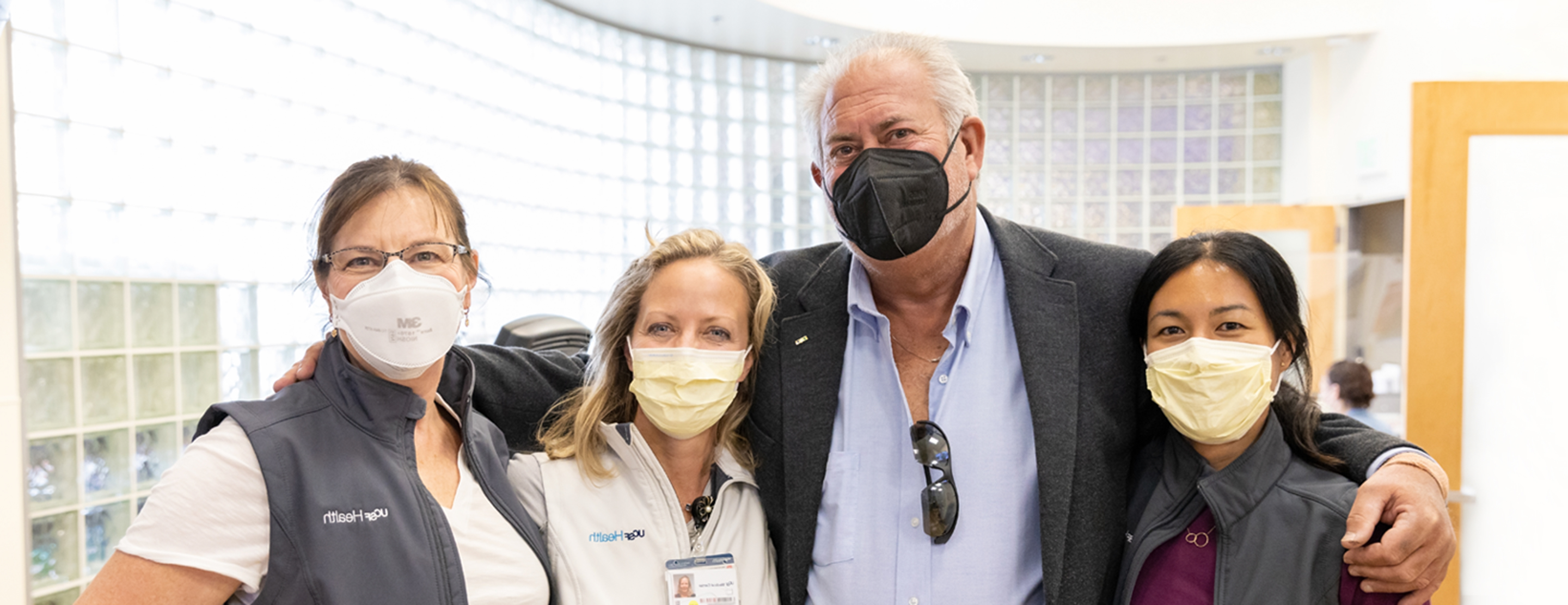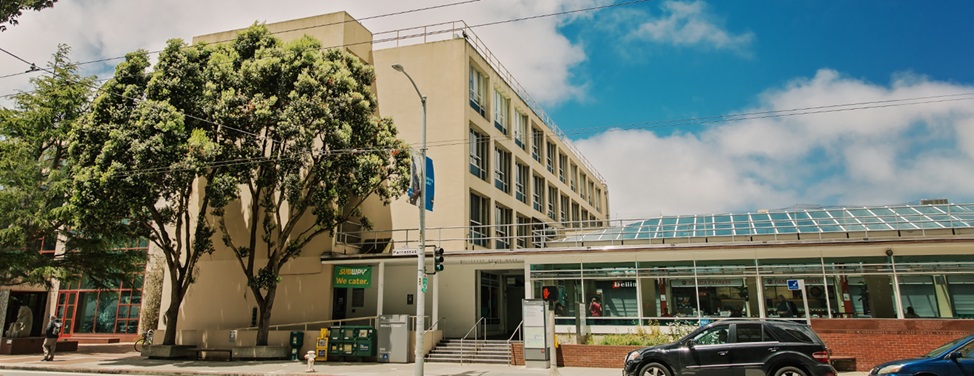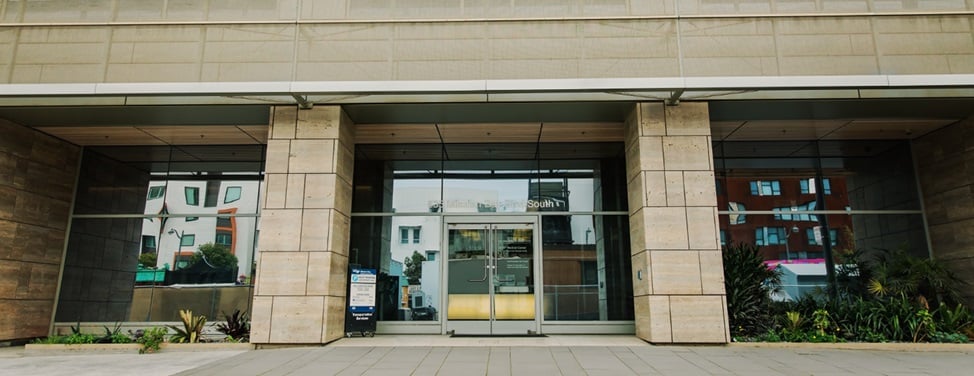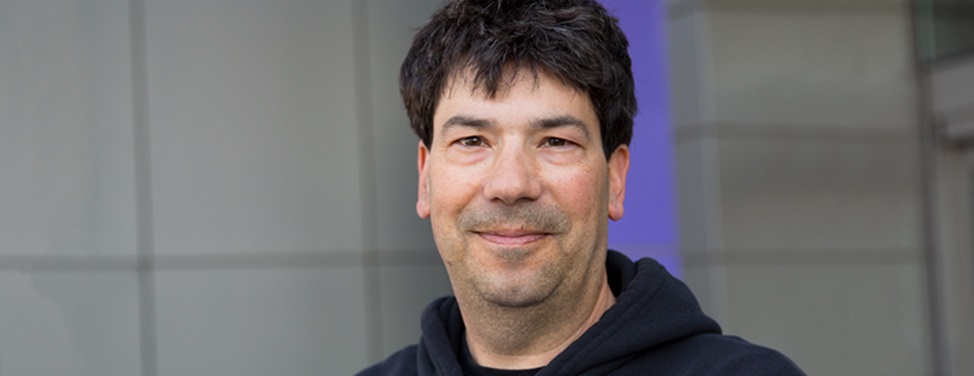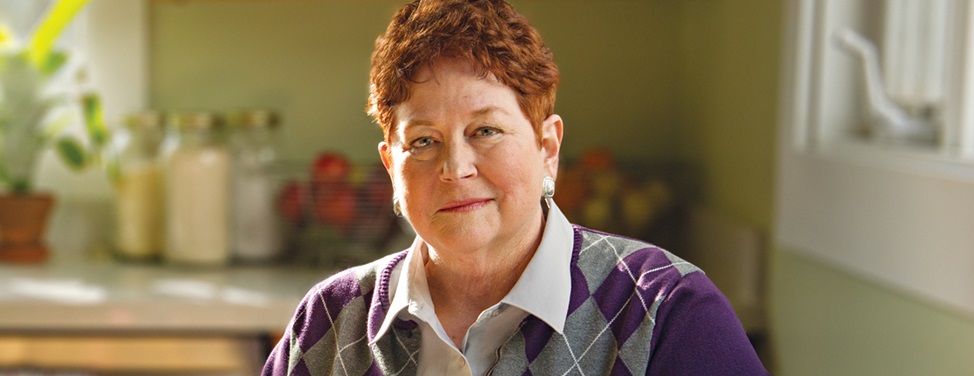John Carroll fully recovered from three heart attacks thanks to a coordinated care team of emergency doctors, interventional cardiologists and other providers at UCSF Health.
After having a heart attack at home, John Carroll arrived at the UCSF Emergency Department with an estimated 13% chance of survival. His condition remained uncertain as his heart stopped two more times that night. But thanks to what his wife, Lorraine, described as a "symphony" of care by the cardiovascular specialists at UCSF, John eventually made a full recovery. "It wasn't his time to go," she says.
Working closely as a team, emergency doctors, interventional cardiologists, surgeons and other providers delivered timely cutting-edge treatments, including two mechanical support devices to assist John's heart in the early hours of his hospitalization. Those interventions saved his life, he and experts agree. "[My UCSF care team] kinda pulled a rabbit out of a hat," John says. "They were remarkable."
John, a 64-year-old retired police officer, had been living for five years with heart failure, a chronic condition in which the heart doesn't pump enough blood to meet the body's needs. His heart failure was likely caused by high blood pressure and coronary artery disease (CAD), a narrowing of the arteries that is the most common type of heart disease. CAD affects about 18.2 million Americans over the age of 20, according to the Centers for Disease Control and Prevention.
With regular checkups and medications, John had been doing well and enjoying his retirement. His heart failure was well managed, according to his cardiologist, Dr. Liviu Klein. "He was in good shape," Klein says. "His heart was a little bit stiff, but it was very well treated."
Then, one October evening in 2021, Lorraine sensed something was off. "He was outside, chatting away with neighbors, but he wasn't himself," she recalls. "I wasn't able to put my finger on it, but I knew he wasn't OK."
While Lorraine prepared dinner, John lay down. When he got up a short time later, he felt unwell and was drenched in sweat. Lorraine, a registered nurse who directs the UCSF Heart and Vascular Center, quickly clocked what was about to happen. The instant he went into cardiac arrest, she recognized it. "I started doing chest compressions with one hand and calling 911 with my other hand," she recalls.
Lorraine was able to resuscitate her husband, but she knew immediate medical attention was still needed. Within 15 minutes, John arrived at the emergency department via ambulance. He was admitted and transferred to the cardiac catheterization lab, UCSF's specialty center for minimally invasive heart treatments.
"He was not in good shape," says interventional cardiologist Dr. Krishan Soni, who quickly performed a coronary angiogram, an imaging technique for viewing the heart's blood vessels. The results showed his right coronary artery was 100% blocked. "After we took pictures of that, he went into cardiac arrest," Soni says.
Lorraine was waiting in the lobby for news when she heard "code blue, cath lab" over the loudspeaker. She knew it meant someone was having a cardiac arrest or another emergency.
"I looked at my daughter and said, 'Oh, my God, that's Daddy,'" she recalls. "I wanted to help but knew I couldn't."






